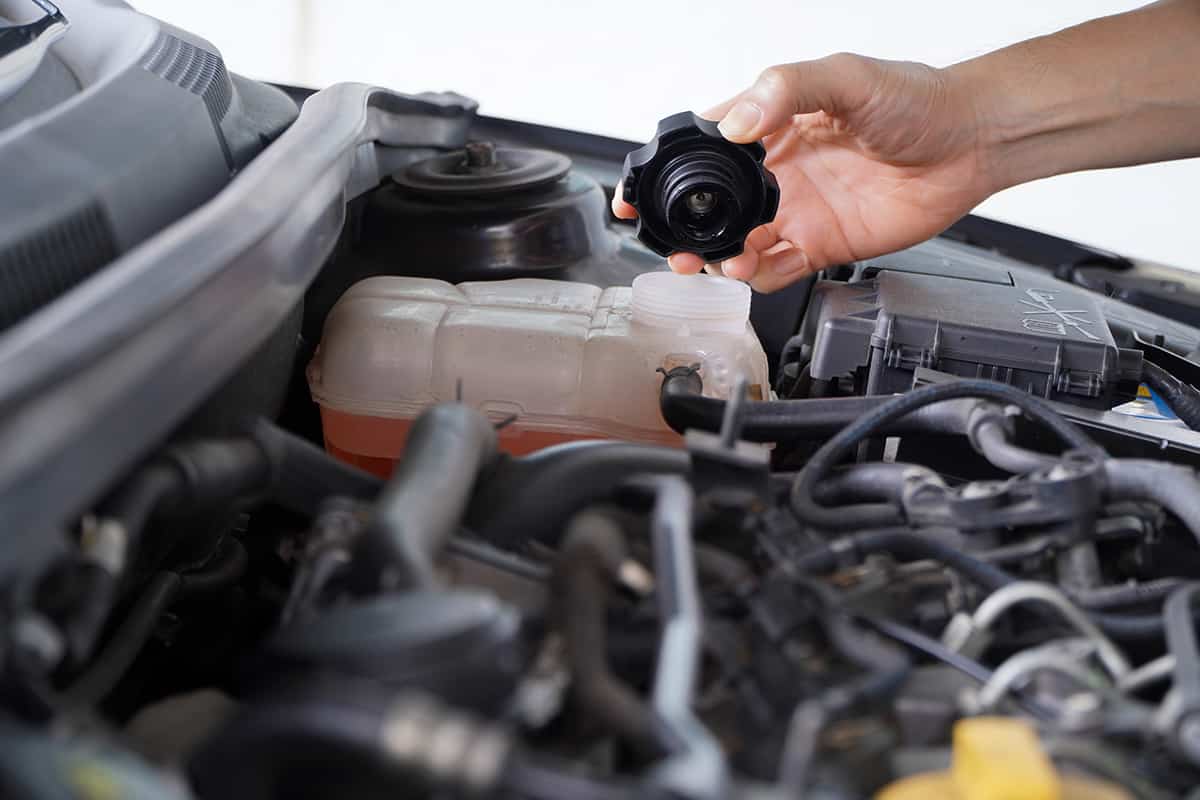```html
Is Your Engine About to Blow? Decoding Coolant Foaming Issues
Seeing foam in your coolant reservoir? Don't panic just yet! Coolant foaming can be a sign of a serious problem, but sometimes it's a relatively simple fix. This guide will walk you through the common causes of coolant foaming, the potential problems it can lead to, and how to troubleshoot the issue before it causes catastrophic engine damage.
Why Coolant Foaming Should Be a Top Concern
Coolant, also known as antifreeze, plays a vital role in keeping your engine running smoothly. It circulates through the engine, absorbing heat and preventing overheating. When coolant foams, its ability to effectively transfer heat is significantly reduced. This can lead to:
- Overheating: Reduced heat transfer leads to increased engine temperatures.
- Engine Damage: Overheating can cause warped cylinder heads, cracked engine blocks, and other serious damage.
- Decreased Fuel Efficiency: An engine running too hot operates less efficiently.
- Premature Wear: Higher temperatures accelerate the wear and tear on engine components.
Ignoring coolant foaming can result in costly repairs and even engine failure. Understanding the causes and addressing the problem promptly is crucial for maintaining your vehicle's health and longevity.
Common Causes of Coolant Foaming Explained
Several factors can contribute to coolant foaming. Identifying the specific cause is essential for effective troubleshooting and repair:
Air Leaks in the Cooling System
Air entering the cooling system is one of the most frequent culprits. This can happen due to:
- Loose Hose Clamps: Check all hose clamps for tightness and signs of corrosion.
- Damaged Hoses: Inspect hoses for cracks, leaks, or bulges.
- Faulty Radiator Cap: A worn or damaged radiator cap can prevent proper system pressurization and allow air to enter.
- Water Pump Cavitation: A failing water pump can create cavitation (air bubbles) which leads to foaming.
Exhaust Gases Entering the Cooling System
A more serious cause of coolant foaming is exhaust gas entering the cooling system. This typically indicates a problem with:
- Blown Head Gasket: A blown head gasket allows combustion gases to leak into the coolant passages.
- Cracked Cylinder Head: Cracks in the cylinder head can also allow exhaust gases to contaminate the coolant.
- Warped Cylinder Head: A warped cylinder head, although less common, can also cause leaks.
Contaminated Coolant
Contamination of the coolant can also lead to foaming. Common contaminants include:
- Oil: Oil leaks can introduce oil into the coolant, causing it to foam.
- Incorrect Coolant Type: Using the wrong type of coolant or mixing different types can create a chemical reaction that leads to foaming.
- Debris: Dirt, rust, and other debris can contaminate the coolant and contribute to foaming.
Old or Degraded Coolant
Coolant loses its effectiveness over time. Old or degraded coolant can become acidic and lose its anti-foaming properties, making it more susceptible to foaming. Regular coolant flushes are essential.
Troubleshooting Coolant Foaming: A Step-by-Step Guide
Here's a breakdown of how to investigate coolant foaming issues:
- Visual Inspection: Check the coolant reservoir for signs of foaming. Also, inspect hoses, clamps, and the radiator cap.
- Pressure Test: A cooling system pressure test can help identify leaks.
- Exhaust Gas Test: A block tester can detect the presence of exhaust gases in the coolant.
- Oil Check: Examine the engine oil for signs of coolant contamination (milky or discolored oil).
- Coolant Analysis: A coolant analysis can determine the condition of the coolant and identify any contaminants.
Preventing Coolant Foaming: Proactive Measures
Prevention is always better than cure. Here are some tips to prevent coolant foaming:
- Regular Coolant Flushes: Follow the manufacturer's recommended maintenance schedule for coolant flushes.
- Use the Correct Coolant Type: Always use the coolant type specified in your vehicle's owner's manual.
- Inspect Cooling System Components Regularly: Check hoses, clamps, and the radiator cap for signs of wear or damage.
- Address Leaks Promptly: Repair any leaks in the cooling system immediately.
Frequently Asked Questions About Coolant Foaming
What does it mean when my coolant is foamy?
Foamy coolant usually indicates that air or exhaust gases are mixing with the coolant. This can be caused by leaks in the cooling system, a blown head gasket, or contaminated coolant. Addressing the issue promptly is vital to prevent engine damage.
Can I drive with foamy coolant?
It's generally not recommended to drive with foamy coolant, especially for extended periods. The foam reduces the coolant's ability to dissipate heat effectively, potentially leading to overheating and engine damage. Consult a mechanic as soon as possible.
How much does it cost to fix coolant foaming?
The cost to fix coolant foaming varies depending on the cause. Minor issues like loose hose clamps might be a simple DIY fix. However, a blown head gasket or cracked cylinder head can result in significant repair costs, potentially ranging from several hundreds to thousands of dollars.
Conclusion: Don't Ignore the Foam!
Coolant foaming is a serious issue that should not be ignored. By understanding the causes and potential problems associated with coolant foaming, you can take proactive steps to maintain your vehicle's cooling system and prevent costly engine damage. If you suspect coolant foaming, don't hesitate to consult a qualified mechanic for diagnosis and repair. Protect your investment and keep your engine running cool! Schedule a coolant system inspection today!
```
